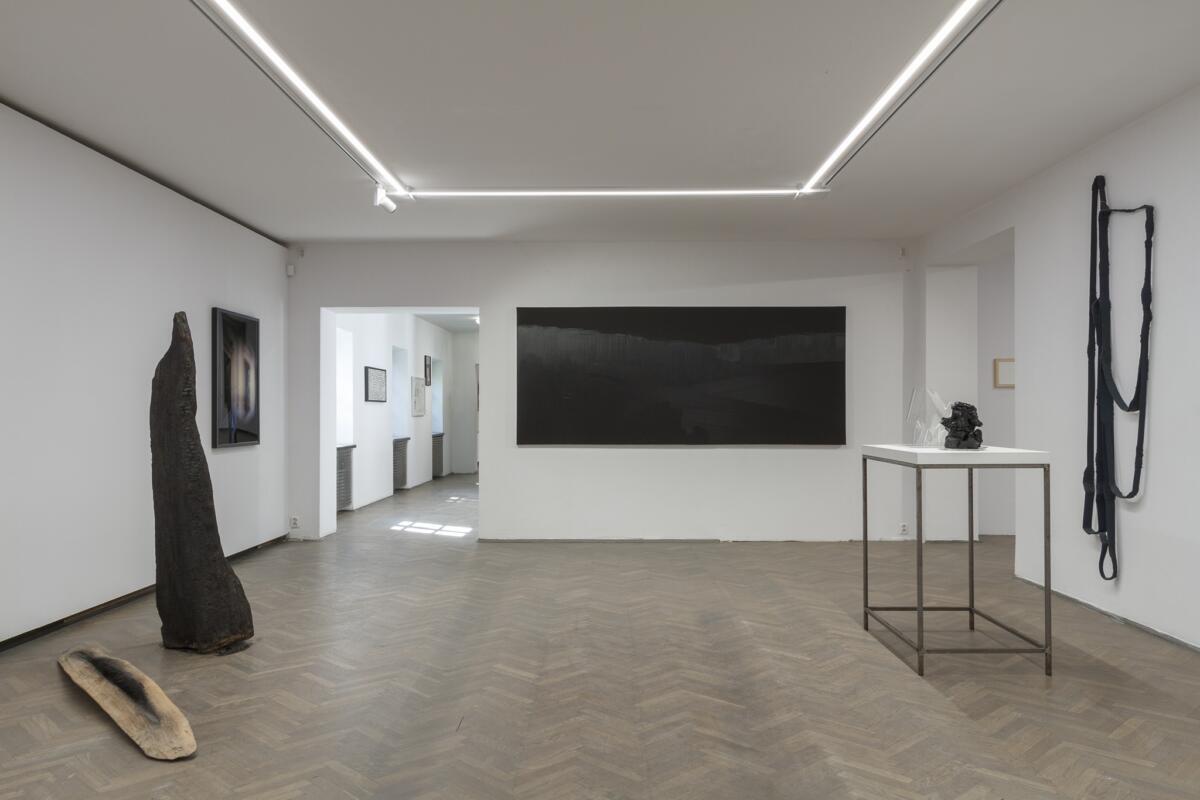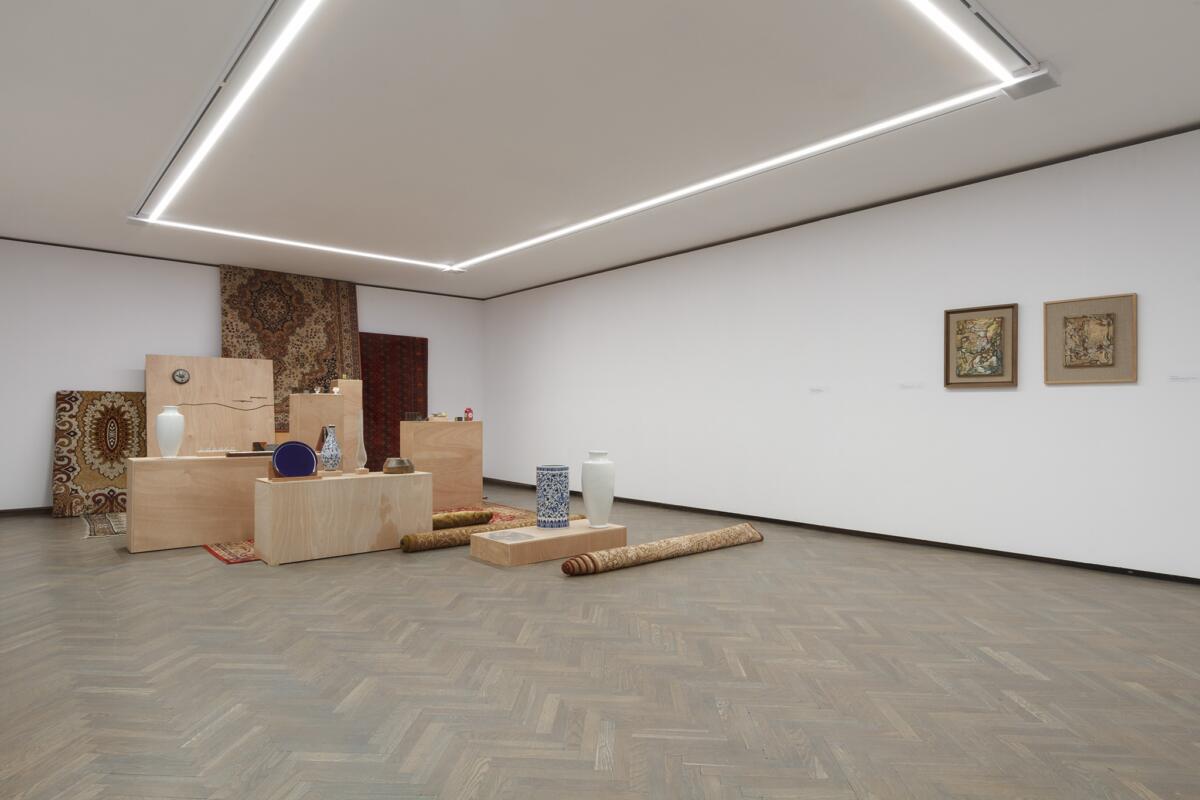![[EN/PL] ‘Sour Cherries’ at Arsenal Gallery in Białystok](https://blokmagazine.com/wp-content/uploads/2020/11/4-1200x800.jpg)
[EN]
text: Ewa Tatar
Sour cherry fruit. Glistening. Ripe. Brimming with juice. Its skin taut and brilliant. Bright red. Thick brown. Unsettling reflexes of black. … To communicate with a cherry fruit, we need not look at it. Touching is enough. … Of course, touching a sour cherry with our lips and tongue is the most vital. Only then does it reveal all its gentleness and the elasticity of the filling of a living sphere it is. … Already the first trickle of juice sprouting from a teeth-pressed cherry reveals all of its taste. It is so complex that to determine its qualities with one word poses a challenge. Above all unsettling, perhaps. … The taste of sour cherry is sharp, piercing, and we feel it not only in our mouth, but it overwhelms us completely. It seems that the cherry tastes of cherry and, at the same time, of some other taste, which is most familiar. A fascination we experience may came from the fact that it seems to have a certain connection with being or that it may precisely be its taste.
… A sour cherry fruit turns towards the sensual side of life and invokes it as a value. … When we nibble on the fruit, we are struck by a contrast between the gentleness of its pulp and the hardness of its pip. A confounding of softness and hardness is familiar to us from our own behaviours and we need not to look for it in a cherry, but of course the sudden unveiling of a mirror we can see ourselves in gives us pleasure. … Existential objects do not contradict individual vision.
… An encounter with bits of being, however consisting in offering them attention, concerns our own existence. As if the direction of the gaze was reversed … ultimately, we arrive at self-understanding. … The point is that looking at a stone, a shoe or a cockroach, we understand what connects us and what separates. How do we exist? Towards what? What values do we embody? The point is we understand ourselves betters thanks to sour cherry fruit. … a encounter of the existing, in which a common sense is revealed.
… when we notice ‘something’ and, moreover, we are able to notice that it is some thing, and not just a thing, … when we consent to the thing gaining all of our attention, we occupy a humbler position, but one allowing to discern the thing that surrounds us and is independent of our will. … This very ‘something’ may be an object for one, but not for another. I can pass a stone without noticing it. … Objects are beings that have lost their anonymity. … From a handful of senses, we choose some.
… Communicating with the object and oneself through an encountered existential object requires particular conditions to be fulfilled. … Those are encounters of undeniable power; to their tenor, about which we cannot but think, we are willing to subordinate broader regions of our lives. … If we are deaf to this kind of speech, resounding within being, we can pass by even the most clamorous, drastic events indifferently, learning nothing and receiving no clues. … the condition for understanding messages of being is our readiness to hear them. Concentration. Assiduous attention. … All this requires rigour, sobriety and a combination of a willingness to submit to radiation of meanings and criticism. … After all, we are those who are reading, but only what is given to us to be read. … Existential facts contain an infinite potential of meaning to be received and engaged. Since in the order of existence, meaning is not only what can be deciphered, but also personally engaged. … If a mobilisation of our attention towards an existential concrete bears the fruits of understanding and communication, if we get to hear even a partial answer to the question ‘who we are’, and if we achieve it in such a non-egocentric way as is the turning towards what is next to us – our effort will likely not fail.
… There is no other pip that is as spitable as a cherry pip. Tiny, round and hard, it resembles a stone thrown with a sling. It lets us enclose in a brief arch between our mouth and the ground all the aggression we are filled with, which we are now able to sever from its true causes and transfer onto the pip. … A gesture of spitting spells out the death of a sour cherry. But a cherry grows from a pip and perdition can bear the fruit of revival.
The cut-up of Jolanta Brach-Czaina’s essay, Wiśnia i rozumienie [Sour Cherry and Understanding], presents the viewer with a way of encountering art (and reflects the author’s intention) at the qualitatively juxtaposed exhibition. Objects co-exists here less with regards to representation (which is often lacking) or a story conveyed (which is sometimes absent) than their visual plasticity. From which the viewer’s attention turns. For a slight unlearning of our clinging onto the safe and recognisable, the objects put our habits of taste and perception to a cognitive rasp; they trip us over. Significantly, the quoted essay was written when its author had a connection to Białystok as a university lecturer. Brach-Czaina’s way of thinking and her language, slightly marginal to her academic contemporaneity, stems from phenomenology (experiencing and the perspective of the experiencing subject), and enters into the purview of ontology (being, essence, existence), and/or metaphysics (why it is and what it is) – depending on a reader. The most important questions posed by the (she) philosopher concern ways in which we really exist when the everyday becomes the very centre of our being and when we make bits and pieces, usually excluded from existential significance, the fact of such being. The quoted essay opens the philosopher’s arguably greatest contribution to Polish humanities, Szczeliny istnienia [Fissures of Being]. Published in 1992, it electrified Polish critical thought and revolutionised the practice of theory in Poland. It came twenty years ahead of the reception and work of new materialisms, forming in practices of thought as well as in practices of art – precisely through matter and working with matter – the question of being, but one involving its social, linguistic and political agency. Around that time starts the history of the Arsenal Gallery Collection II, still without its most currently recognisable Eastern course, closely attending to ontological problems posed by artists at the turn of 1980s. Around the time begins the Prokesz Family Collection, whose least obvious choices come from the iconoclastic revolution of New Materialism in global art.
… For is it possible to be more powerfully than being?
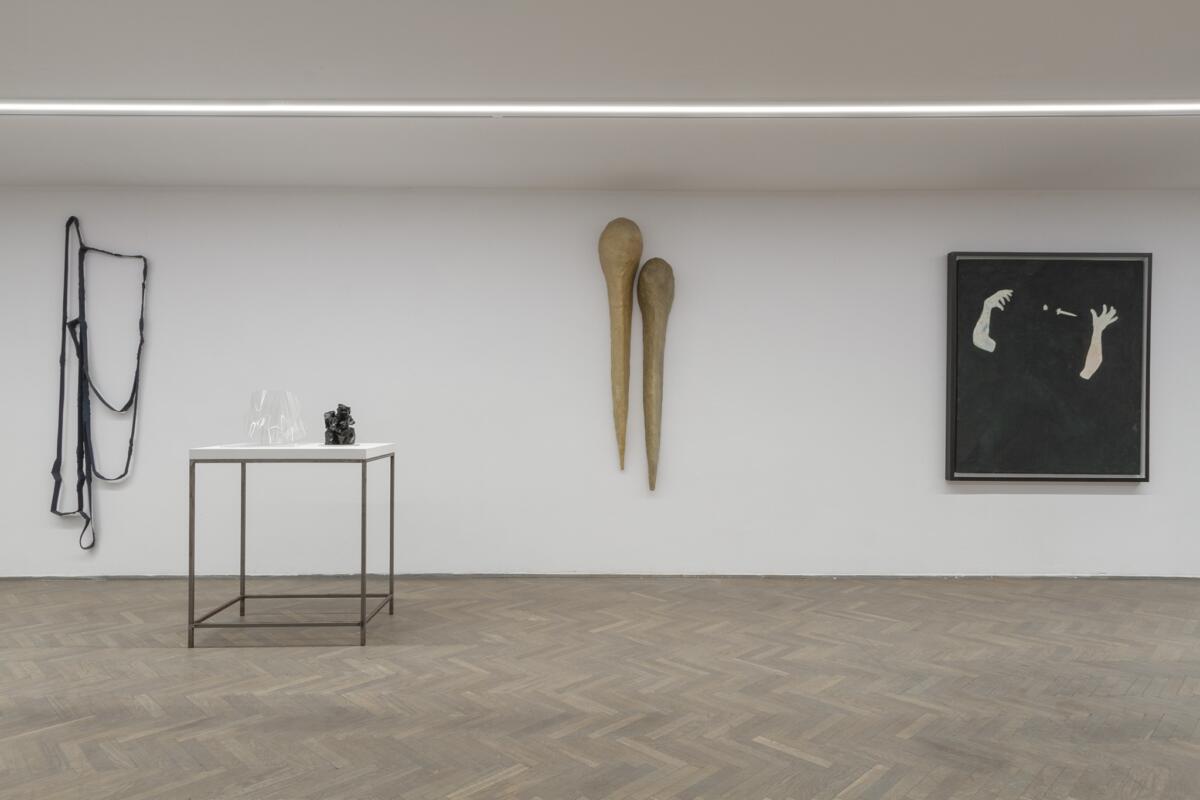
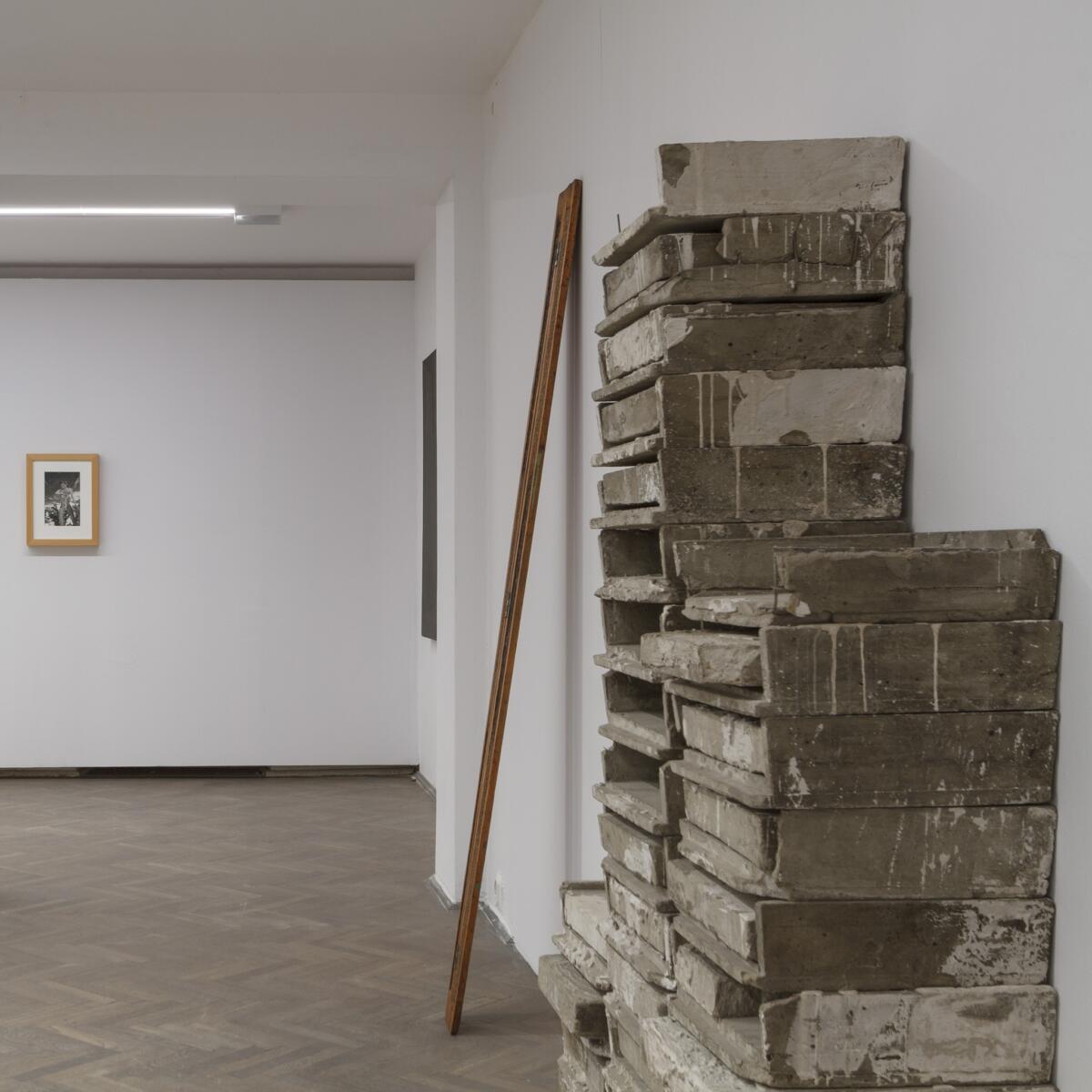


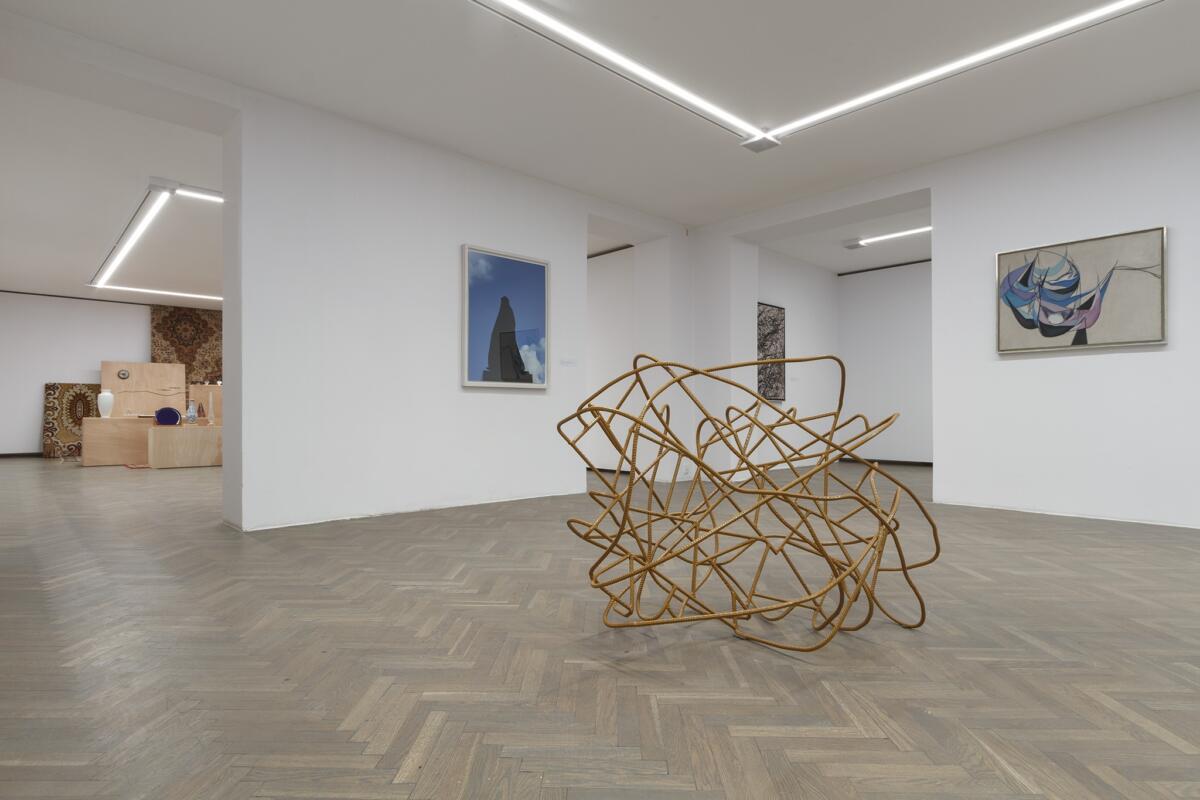

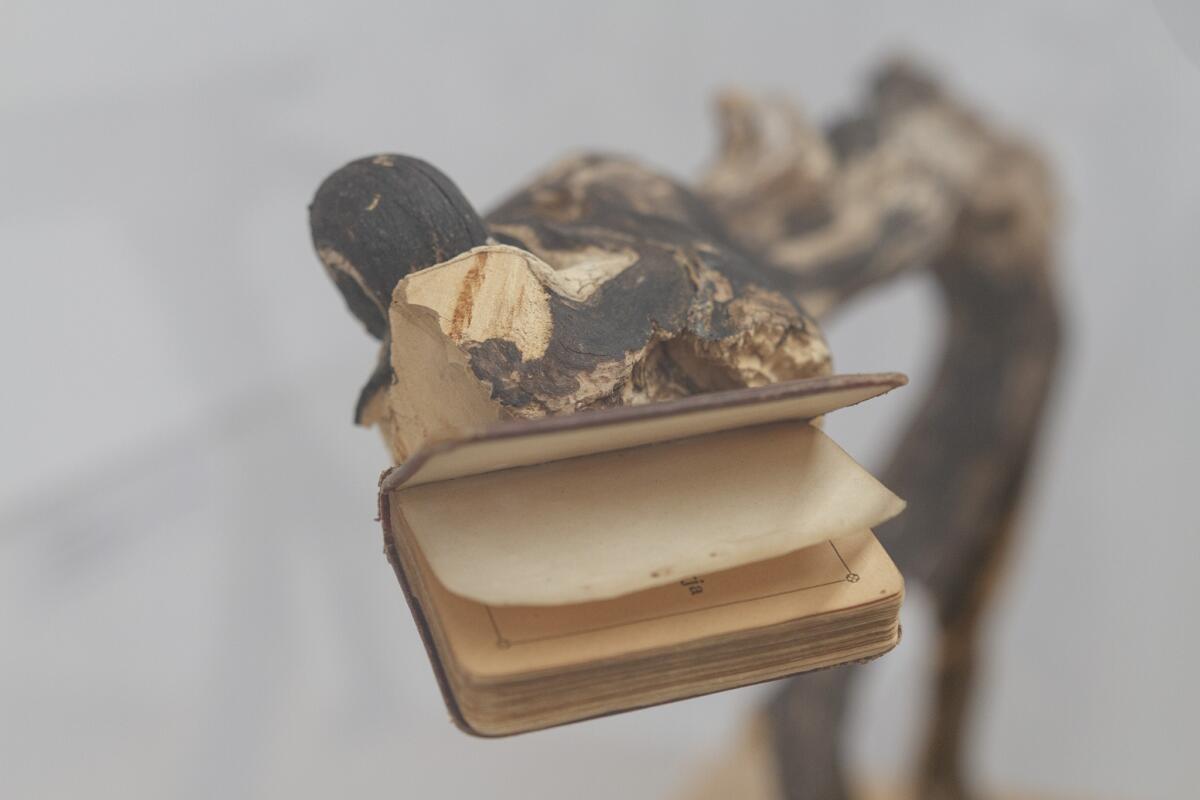
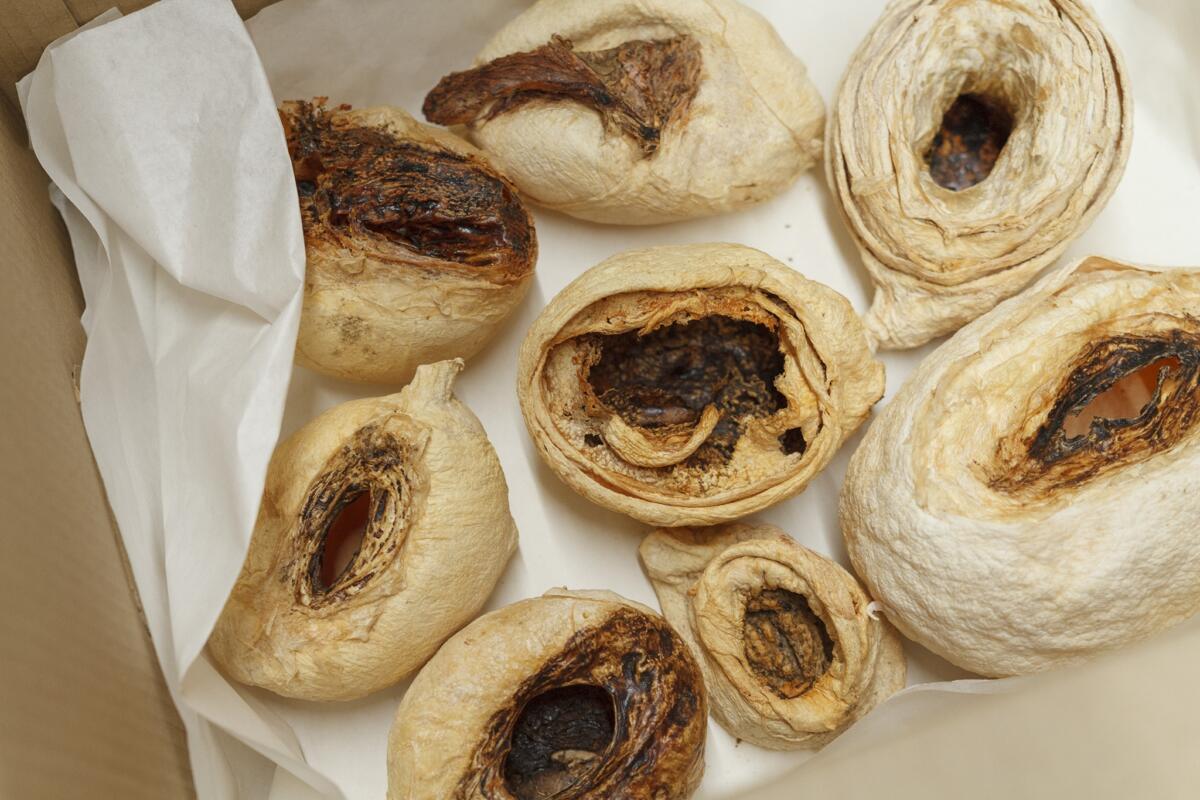
[PL]
tekst: Ewa Tatar
Owoc wiśni. Lśniący. Dojrzały. Wypełniony sokiem. Skórka napięta i błyszcząca. Jaskrawa czerwień. Gęsty brąz. Niepokojące lustra czerni. […] By porozumiewać się z owocem wiśni, nie musimy nań patrzeć. Wystarczy dotykać. […] Oczywiście najważniejsze jest dotknięcie wiśni wargami i językiem. Dopiero wtedy ujawnia się cała delikatność i sprężystość wypełnienia żywej kuli, jaką stanowi. […] Już pierwsza strużka soku tryskająca z naciśniętej zębami wiśni ujawnia cały smak. Tak złożony, że trudno jednym słowem określić, jaki jest. Chyba przede wszystkim niepokojący. […] Smak wiśni jest ostry, przejmujący, a czujemy go nie tylko w ustach, ale wręcz nas całych ogarnia. Wydaje się, że wiśnia ma smak wiśni, a zarazem jakiś inny jeszcze, który to dobrze znamy. Fascynacja, jakiej doświadczamy, może pochodzić stąd, że wydaje się, iż ma on jakiś związek z istnieniem i może nawet jest właśnie jego smakiem.
[…] Owoc wiśni zwraca nas ku zmysłowej stronie życia i przywołuje ją jako wartość. […] Kiedy nagryzamy wiśnię, uderza kontrast między delikatnością miąższu a twardością pestki. Pomieszanie miękkości i twardości jest nam samym z własnych zachowań znane i nie musimy szukać go w wiśni, lecz oczywiście sprawia nam przyjemność niespodziewane odsłonięcie zwierciadła, w którym możemy się przejrzeć. […] Obiekty egzystencjalne nie przeciwstawiają się indywidualnemu widzeniu.
[…] Spotkanie z drobinami bytu, choć polega na udzieleniu im uwagi, dotyczy naszego istnienia. Jakby odwracał się kierunek spojrzenia, […] ostatecznie dochodzimy do rozumienia siebie. […] Chodzi o to, żeby patrząc na kamień, but albo na karalucha zrozumieć, co nas łączy, a co dzieli. Jak istniejemy? Ku czemu? Jakie wartości wcielamy? Chodzi o to, by zrozumieć lepiej siebie dzięki owocowi wiśni. […] spotkanie istniejących, w którym odsłania się sens wspólny.
[…] Gdy jednak zauważamy „coś” i w dodatku potrafimy dostrzec, że to jest coś, a nie byle co, […] gdy godzimy się na to, by coś zdobyło naszą uwagę, zajmujemy pozycję skromniejszą, lecz umożliwiającą rozeznanie w tym, co nas otacza i nie zależy od naszej woli. […] To samo „coś” może być dla jednego obiektem, a dla drugiego nie. Mogę minąć kamień, nie zauważając go. […] Obiekty są bytami, które straciły anonimowość. […] Z garści sensów wybieramy niektóre.
[…] Porozumienie z obiektem i z sobą samym poprzez napotkany obiekt egzystencjalny wymaga spełnienia szczególnych warunków. […] Są zdarzenia posiadające niewątpliwą moc; ich wymowie, o której nie możemy nie myśleć, skłonni jesteśmy podporządkować szersze obszary naszego życia. […] Jeśli jesteśmy głusi na ten rodzaj mowy, która brzmi wewnątrz bytu, najbardziej krzyczące, drastyczne zdarzenia możemy minąć obojętnie, nie dowiedziawszy się niczego i nie otrzymawszy żadnej wskazówki. […] warunkiem rozumienia komunikatów bytu jest nasza gotowość do wysłuchania ich. Skupienie. Napięta uwaga. […] Wszystko to wymaga rygoru, trzeźwości i połączenia chęci poddania się promieniowaniu znaczeń z krytycyzmem. […] To jednak my czytamy, choć tylko to, co jest nam dane do odczytania. […] W faktach egzystencjalnych zawarty jest nieskończony potencjał sensu do odebrania i podjęcia. Gdyż w porządku egzystencjalnym sens jest nie tylko tym, co może być odczytane, ale i osobiście podjęte. […] Jeśli mobilizacja naszej uwagi ku egzystencjalnemu konkretowi zaowocuje zrozumieniem i porozumieniem, jeśli choć częściowo usłyszymy odpowiedź na pytanie, kim jesteśmy, i jeśli osiągniemy to w tak nieegocentryczny sposób, jakim jest zwrócenie się ku temu, co jest obok nas – nasz wysiłek nie powinien być stracony.
[…] Bo czyż można być mocniej niż to, co jest?
[…] Nie ma pestki, którą można by plunąć tak, jak pestką wiśni. Okrągła, niewielka i twarda przypomina kamień wyrzucony z procy. W krótkim łuku między ustami a ziemią pozwala zamknąć całą wypełniającą nas agresję, którą udaje nam się oderwać od prawdziwych przyczyn i przerzucić na pestkę. […] Gest splunięcia obwieszcza śmierć wiśni. Ale wiśnia wyrasta z pestki i zatracenie może zaowocować odrodzeniem.
Cut-up na podstawie eseju „Wiśnia i rozumienie” Jolanty Brach-Czainy proponuje widzowi sposób spotkania ze sztuką (i oddaje intencję autorki) na zestawionej walorowo wystawie. Obiekty koegzystują tu mniej ze względu na reprezentację (często tej brak w ogóle) czy niesioną przez nie historię (tej czasami nie widać), bardziej na plastykę. Od niej kierują uwagą widza. Trochę oduczają nas zawieszania się na tym, co bezpieczne i rozpoznawalne, wystawiają na poznawczy zgrzyt nasze przyzwyczajenia smakowe i percepcyjne, podstawiają nam nogę. Co ważne: przywołany esej powstał w czasach, kiedy jego autorka była związana z Białymstokiem jako wykładowczyni. Sposób myślenia i język pisania Brach-Czainy, trochę na marginesach jej ówczesności akademickiej, wyrasta z fenomenologii (doświadczanie i perspektywa doświadczającego podmiotu), wchodzi w zakres ontologii (byt, istota, istnienie) albo/i metafizyki (dlaczego jest i czym jest) – zależy, kto czyta. Najważniejsze pytania, które stawia (ta) filozof dotyczą tego, jak rzeczywiście istniejemy, gdy codzienności pozwolimy naszego bytowania i uznamy za fakt istanienia wypierany z egzystanencjalnego sensu drobiazg. Przywołany esej otwiera prawdopodobnie najważniejszy dla polskiej humanistyki tom Brach-Czainy: Szczeliny istnienia. Wydany w 1992 zelektryfikował polską myśl krytyczną i zrewolucjonizował praktykowanie teorii w Polsce. Wyprzedził o prawie dwadzieścia lat recepcję i pracę nowych materializmów stawiających zarówno w praktykach myśli, jak i praktykach sztuki – właśnie poprzez materię i działanie z nią – pytanie o byt, ale uwzględniające jego społeczną, językową i polityczną sprawczość.
Mniej więcej w tym samym czasie zaczyna się historia Kolekcji II Galerii Arsenał, jeszcze bez jej najbardziej znanego współcześnie wschodniego kierunku, bliska ontologicznym pytaniom stawianym przez artystów na przełomie lat osiemdziesiątych i dziewięćdziesiątych dwudziestego wieku. Mniej więcej w tym samym czasie zaczyna się także budowanie Kolekcji rodziny Prokeszów, w której najbardziej nieoczywiste wybory pochodzą z momentu ikonoklastycznej rewolucji nowego materializmu w sztuce światowej.
Imprint
| Artist | Ketuta Alexi-Meskhishvilli, Nairy Baghramian, Wojciech Bąkowski, Carla Black, Agata Bogacka, Kerstin Brätsch, Rafał Bujnowski, Marek Chlanda, Isabelle Cornaro, Andrzej Czarnacki, Wanda Czełkowska, Oskar Dawicki, Thea Djordjadze, Veaceslav Druta, Aleana Egan, Zofia Gramz, Ryszard Grzyb, Susanna Harwood Rubin, Piotr Janas, Nikita Kadan, Zhanna Kadyrova, Jarosław Kozakiewcz, Jarbas Lopez, Goshka Macuga, Jadwiga Maziarska, Małgorzata Niedzielko, Paulina Ołowska, Witek Orski, Włodzimierz Pawlak, Jacques Pierre, Erna Rosenstein, Teresa Rudowicz, Anri Sala, Jacek Sempoliński, Jan Smaga, Mikołaj Smoczyński, Mikołaj Sobczak, Monika Sosnowska, Irmina Staś, Iza Tarasewicz, Leon Tarasewicz, Armando Tudela, Waldemar Umiastowski, Aleksandra Waliszewska, Mark van Yetter. Works from the Prokesz Family Collection and the Arsenal Gallery in Białystok Collection II |
| Exhibition | Sour Cherries |
| Place / venue | Arsenal Gallery, Białystok, Poland |
| Dates | 18 September – 12 November 2020 |
| Curated by | Ewa Tatar |
| Photos | Maciej Znaniecki |
| Website | galeria-arsenal.pl |
| Index | Agata Bogacka Aleana Egan Aleksandra Waliszewska Andrzej Czarnacki Anri Sala Armando Tudela Arsenal Gallery in Białystok Carla Black Erna Rosenstein Ewa Tatar Galeria Arsenał w Białymstoku Goshka Macuga Irmina Staś Isabelle Cornaro Iza Tarasewicz Jacek Sempoliński Jacques Pierre Jadwiga Maziarska Jan Smaga Jarbas Lopez Jarosław Kozakiewcz Kerstin Brätsch Ketuta Alexi-Meskhishvilli Leon Tarasewicz Małgorzata Niedzielko Marek Chlanda Mark van Yetter Mikołaj Smoczyński Mikołaj Sobczak Monika Sosnowska Nairy Baghramian Nikita Kadan Oskar Dawicki Paulina Ołowska Piotr Janas Rafał Bujnowski Ryszard Grzyb Susanna Harwood Rubin Teresa Rudowicz Thea Djordjadze Veaceslav Druta Waldemar Umiastowski Wanda Czełkowska Witek Orski Włodzimierz Pawlak Wojciech Bąkowski Zhanna Kadyrova Zofia Gramz |



